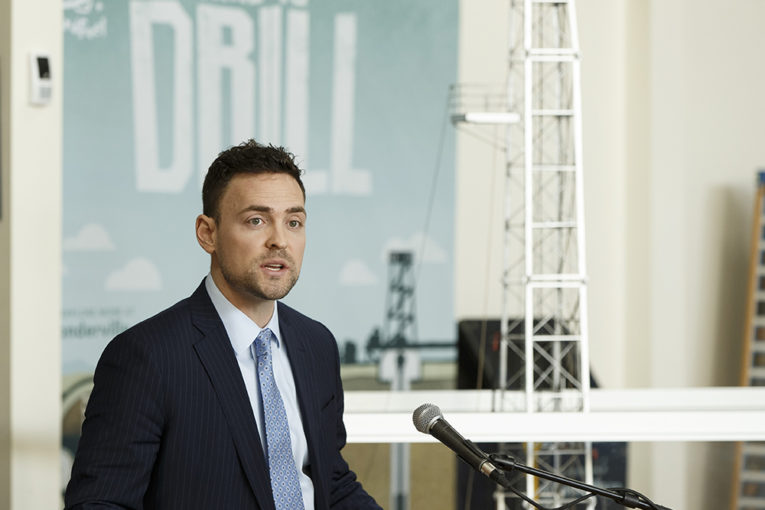
A new year filled with fresh hope for Alberta’s energy sector has arrived, along with an exasperating array of old issues that just won’t fade away.
As Canada’s oilpatch steps into 2019, it’s faced with continuing complications and some new issues to contend with: sagging commodity prices, lacklustre investor interest, an inability to build new pipelines and — for the first time in decades — a provincial policy to curb crude production.
Like the boozy visitor who refuses to leave once the holiday party ends, many of these problems have overstayed their welcome and must be resolved so new challenges can be tackled.
“It is a blended outlook,” Tristan Goodman, president of the Explorers and Producers Association of Canada, said Wednesday.
“There obviously remains some dark clouds out there around our ability to continue to develop and increase growth but, at the same time, there are a couple of opportunities coming up. . . .
“It is a new year with old problems, but I do think we are closer to solutions.”
Let’s hope he’s correct.
The mood entering the year is one of diminished expectations from just a few months ago, before oil prices plummeted and the Trans Mountain expansion was sidelined by a legal ruling.
Industry officials remain hopeful that conditions will improve in the back half of 2019, if new pipelines proceed and the oil-price differential remains in check.
A mixed outlook also exists within the oilfield services sector, as drillers face flat-to-declining capital budgets being proposed by some of their customers.
Complicating the outlook is the province’s new mandatory oil curtailment strategy, which took effect Jan. 1. Under the policy, operators must reduce their output by a total of 325,000 barrels per day, affecting about nine per cent of Alberta’s overall production.
The decline is expected to lead to less exploration and development work, particularly in the first half of 2019.
“At this stage, (the new year) doesn’t look very promising but I think overall, based on how many things are in the hopper today, that could fundamentally change,” said Mark Scholz, president of the Canadian Association of Oilwell Drilling Contractors.
“If things don’t look better for the price of oil and the amount we can get to markets outside the United States, then I don’t think 2019 is going to be any better than 2018,” added Gary Mar, CEO of the Petroleum Services Association of Canada.
Much of the trepidation comes from lacklustre prices for both oil and natural gas.
Benchmark West Texas Intermediate (WTI) crude closed Wednesday at US$46.54 per barrel, up more than $1 on the day. However, that is still down almost $20 a barrel from prices seen on Halloween.
The good news is the differential between Western Canadian Select oil and benchmark WTI prices remains low. The discount fell $3.15 Wednesday to around US$12.50 a barrel, according to Net Energy.
Meanwhile, spot prices for Alberta natural gas sold at the AECO hub earlier this week sat at just US$1.15 per thousand cubic feet.
“Oil prices are at least within a realm of reason. Natural gas prices are pretty rough right now,” added Goodman.
“It’s really at rock bottom.”
In November, CAODC projected 6,962 wells would be drilled this year, up slightly from 2018.
Since that forecast was released, the province unveiled its temporary production cut to reduce oil inventories and support stronger prices for Alberta crude.
Scholz believes the association’s initial projections will be off by about 10 per cent in the first quarter — usually the busy winter drilling season — because of curtailment.
“We had a fairly unprecedented slowdown at the tail end of December,” he said.
“The crystal ball is a bit hazy right now and I don’t really know what 2019 is going to end up looking like.”
While pricing and market access problems still dog the sector, there are some promising signs on the horizon.
The mammoth LNG Canada project is moving ahead, offering longer-term optimism for the country’s gas sector.
If the oil curtailment plan works, analysts believe it should keep the price discount relatively low during the year until new pipelines are built.
Enbridge’s Line 3 replacement project is expected to be completed before the end of 2019, adding about 370,000 barrels per day of takeaway capacity out of Western Canada.
There’s also a chance the Trans Mountain expansion project could restart construction later this year if all of the pieces fall into place.
National and provincial elections are expected this year, and the fate of the contentious federal Bill C-69 should become clearer. Any of these events could profoundly affect energy policies in 2019.
The other good news is that economic growth is expected to continue in Alberta this year.
RBC Economics recently projected Alberta’s economy will expand by 1.5 per cent this year, down from 2.4 per cent in 2018.
Curtailment is expected to lower GDP growth by up to one percentage point, although that could be softened by how oil prices respond to the new policy.
“The differential has narrowed quite a bit . . . but it’s still early going,” said RBC assistant chief economist Paul Ferley.
As new pipeline capacity is built and oil curtailment winds down, the provincial economy should rebound in 2020 and grow by 2.7 per cent, RBC forecasts.
In other words, the next 12 months might serve as a bridge to better times in Alberta.
But 2019 is only getting started.
It’s time to cast some of the old problems aside, come up with some fresh solutions and embrace the beginnings of a brand new year.
Chris Varcoe is a Calgary Herald columnist.
You can read more of the news on source
